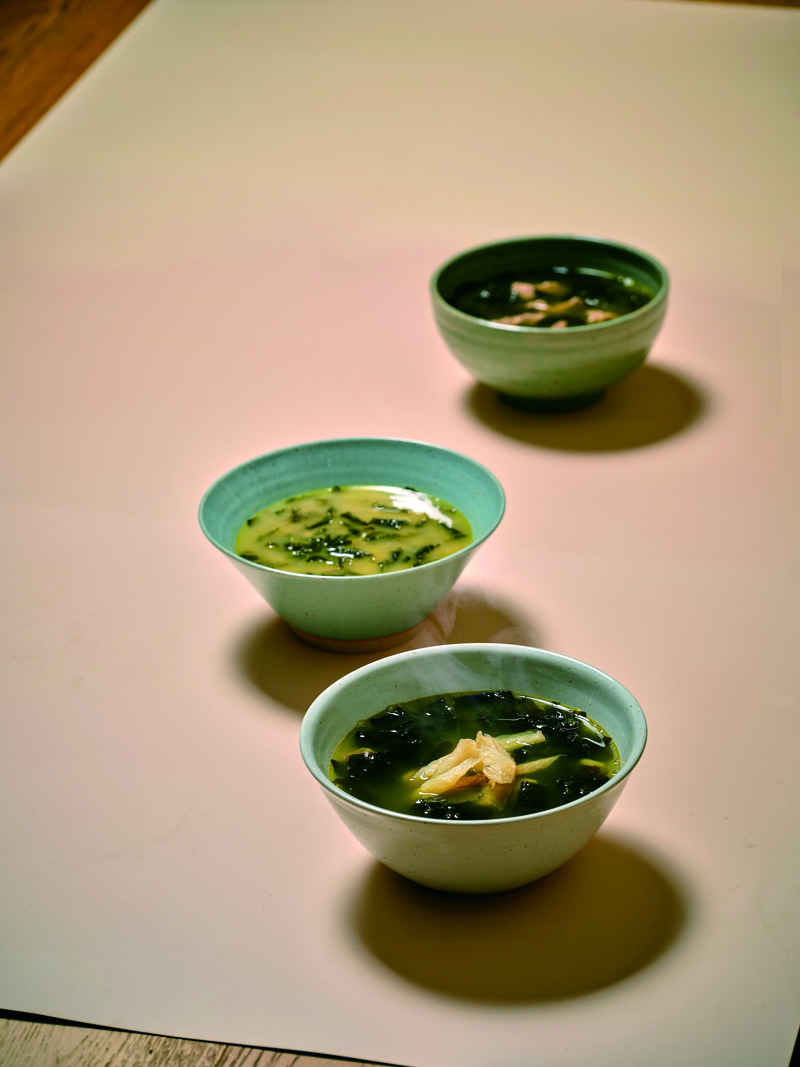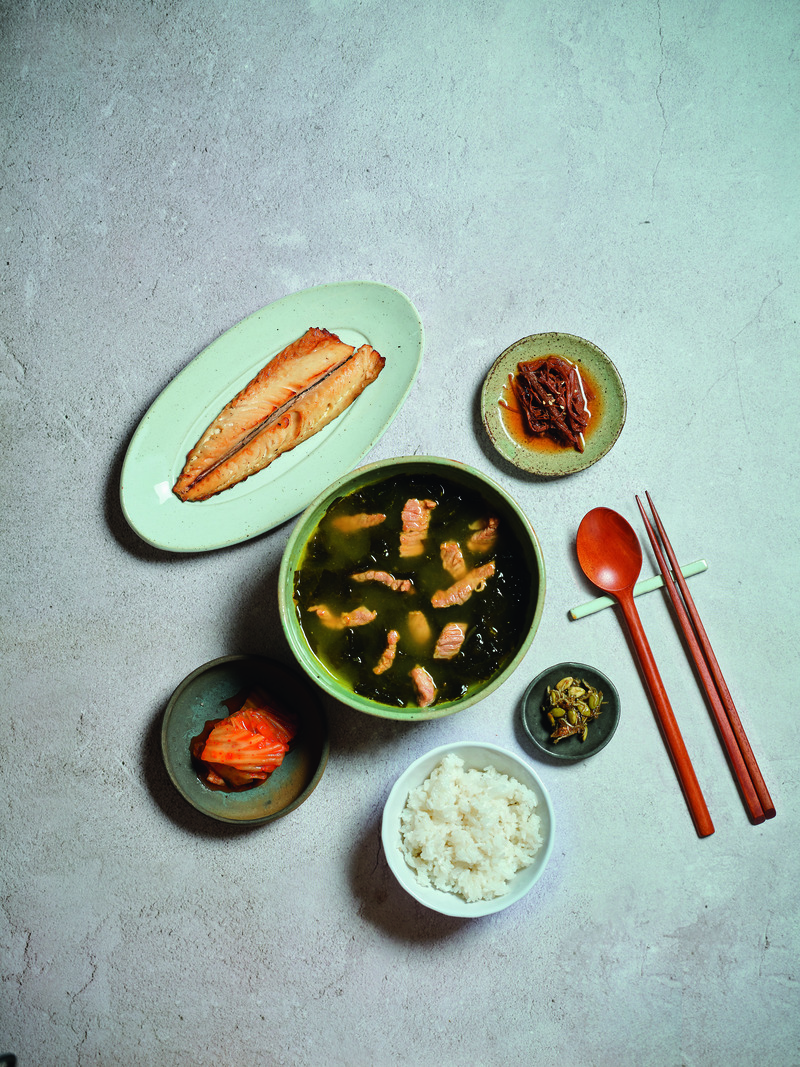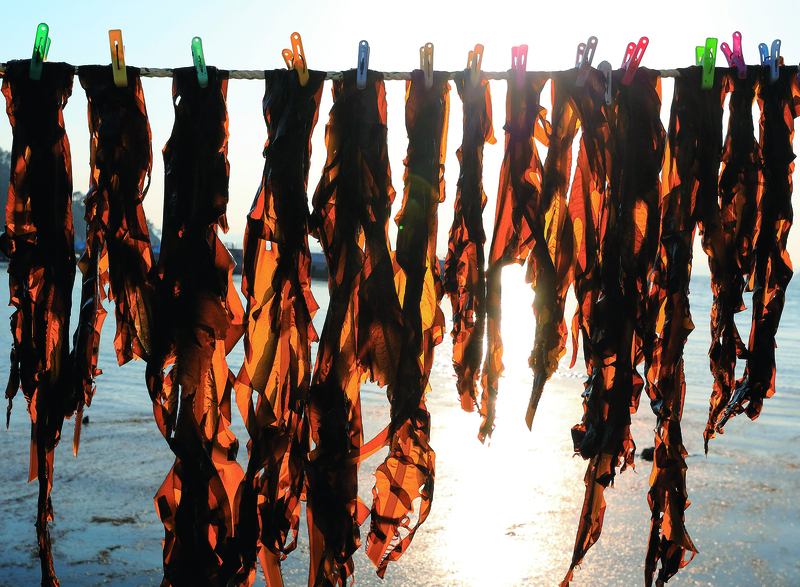Miyeokguk, a soup primarily made with seaweed, soy sauce, and sesame oil, has a unique texture along with a savory taste that perfectly captures the essence of the sea. The dish is unique to Korea’s cuisine and a product of the country’s rich culinary tradition.

Commonly served on birthdays and to new mothers, miyeokguk is closely associated with childbirth in Korean culture.
In Korean, the term jjapjjalhada is often used to describe ingredients and dishes that are both savory and intensely flavorful. It also implies that the food is neither too salty nor too bland but has the perfect level required to elevate the overall taste. Achieving this delicate equilibrium is of great importance in Korean cuisine, particularly in dishes such as miyeokguk.
SPECIAL YET COMFORTING
Miyeokguk holds a special place in the hearts of many Koreans. While the soup is commonly served as the centerpiece of a meal, enjoyed as a side dish with drinks, or even eaten to help with weight loss, understanding what makes it so precious in the eyes of an entire nation requires a closer look.
It has long been customary for Korean women to eat miyeokguk in the days after giving birth. But of all the diverse dishes in Korean cuisine, why seaweed soup? The chief ingredient, namely seaweed, is rich in protein, carbohydrates, fiber, calcium, vitamin A, potassium, and selenium, as well as other vitamins and minerals. Its high iron and iodine content is especially beneficial for promoting blood circulation and preventing anemia, making it the perfect food for women who have recently given birth.
In line with this tradition, it has become common practice for families to gather on birthdays to enjoy a bowl of miyeokguk together as a way of commemorating the occasion. Conversely, there are times when Koreans intentionally avoid eating miyeokguk altogether, such as on the day of an exam or job interview. There is even a dictionary-listed Korean idiom, miyeokguk mokda, which translates to “eating miyeokguk,” and expresses the notion of failing an exam or interview. The meaning is rooted in a superstition that consuming the soup on such a day could cause a slip-up due to the seaweed’s slippery texture.
A SIMPLE RECIPE
The recipe for miyeokguk is relatively simple and only requires a handful of ingredients — dried seaweed, beef, sesame oil, salt, and gukganjang, a light soy sauce that’s an essential ingredient for Korean soups. First, the dried seaweed is soaked in water and allowed to expand, after which it is drained and cut into slices roughly four or five centimeters in length. The beef, which serves as a flavor enhancer rather than as the main ingredient, is cut into thin pieces of one or two centimeters.
After these steps have been completed, sesame oil is heated in a pot, in which the beef and seaweed are stir-fried until they are evenly cooked. This process generates a cloudy broth with a delightful aroma and also imparts the seaweed and beef with a nutty and savory flavor.
Once the broth starts to bubble, water is added. The soup is then seasoned with both salt and light soy sauce and left to simmer for another thirty minutes until the dish is ready to serve. Although plain water can be used, substituting it for anchovy stock, beef broth, or the starchy water left over from rinsing rice give the soup more depth and a richer taste. A small amount of minced garlic can also be added for extra flavor, but this step is usually omitted by those who wish to fully appreciate the underlying taste of the seaweed and beef.

While the simplest type of miyeokguk only consists of seaweed and beef, there are many variations made with local ingredients that reflect regional culinary traditions.
THE SECRET TO A DEEPER FLAVOR
Thanks to its distinctively crunchy and smooth texture, the incorporation of seaweed, along with pieces of flavorful beef, significantly elevates the soup’s taste profile. The seaweed used in the soup is sea mustard, a kelp species native to cold-temperate coastal waters. It possesses a notably salty and fishy taste when eaten raw. However, much of this saltiness can be reduced by thoroughly rinsing and soaking it in water, which leaves behind a far subtler flavor along with a pleasant aroma reminiscent of the ocean.
Stir-frying sea mustard with beef in sesame oil and then simmering them in water helps bring out the flavor in each of the individual ingredients. Hence, the longer miyeokguk is left to simmer, the more savory its flavor becomes. This is why it seems to taste even better when reheated.
For a nourishing and satisfying meal, nothing beats a steaming portion of miyeokguk paired with a bowl of freshly cooked white rice and served with some well-fermented kimchi. This hot, hearty, and intensely savory soup boasts all the qualities Koreans look for in a dish.
With sea mustard as its main ingredient, miyeokguk is a uniquely Korean dish. Indeed, the incorporation of seaweed in soups is uncommon in most other cuisines. Miyeokguk thus remains a somewhat unknown dish abroad. Tony Yoo, the chef-owner of Dooreyoo, a Korean restaurant located in Seoul’s Jongno District, recalls preparing miyeokguk for some friends when he was studying in Italy. Upon seeing the dish, the reaction of his friends, who hailed from all corners of the globe, was particularly memorable. “What’s that dark, slimy, strange-looking thing?” one of them even asked in horror. After tasting the soup, however, everyone asked for seconds, affectionately dubbing the dish “encore miyeokguk.” Although Tony’s friends were initially skeptical because they had never tried the dish, they quickly found it to be deliciously addictive.

Sanmo miyeok, literally “seaweed for new mothers,” refers to freshly harvested seaweed that is sun-dried in the ocean breeze. It is known for its delicate texture and ability to produce a rich broth.
ⓒ gettyimagesKOREA
REGIONAL VARIATIONS
Korean soups tend to vary slightly between regions and households, from their preparation all the way to their individual ingredients. This can be attributed to the differences in local specialties as well as the respective cooks’ personal preferences.
Most standard miyeokguk recipes typically include sea mustard and beef, but regional variations may substitute beef for shellfish, such as clams or mussels, or even fish, such as flounder, hairtail, or Pacific saury. As such, this particular dish works with any kind of protein, whether from the land or the sea.
On Ulleung Island, known for its Pacific saury dishes, miyeokguk is prepared with this popular catch instead of beef. To prepare the dish, the fish is first deboned and then shaped into little balls with starch and eggs before being added to the soup. Given its subtle flavor, Pacific saury blends nicely with the soup without overpowering it. In some parts of Gyeongsang Province, miyeokguk includes hand-rolled rice balls known as “saeal” that are made from glutinous rice flour. They boast a chewy texture that perfectly complements the seaweed’s crunchiness. The cuisine of Jeju Island includes a variation of miyeokguk made with wild sea urchin roe. Highly prized in Korea, it elevates the traditional miyeokguk into a gourmet delicacy thanks to its creamy, pudding-like texture, savory flavor, and refreshing marine scent. Other recipes include dried pollock, shredded chicken breast, or shrimp.
REINVENTING A TIMELESS CLASSIC
Ironically, despite the long history and numerous variations of miyeokguk that can be found throughout the country today, there used to be only few restaurants specializing in it. This is likely due to the soup’s widespread perception as a simple, everyday dish traditionally prepared at home.
In recent years, however, miyeokguk restaurants have begun to emerge, many of which offer variations prepared with special ingredients. One visually striking example is gajami miyeokguk, which includes a whole flounder served in the bowl. Other popular adaptations include miyeokguk made with abalone, a highly prized delicacy, or more expensive cuts of beef such as brisket. These new establishments also take pride in preparing their own broths using a variety of shellfish and meat which they simmer for a long time to achieve a richer and deeper flavor. Characterized by the use of unique ingredients and specially crafted broths, these modern takes on the timeless classic have given rise to what can be considered an entirely new dish.
Miyeokguk is a great dish for anyone visiting Korea. While the seaweed’s somewhat dark and slimy appearance may initially feel off-putting to some, trying this distinctively Korean soup steaming hot with a bowl of freshly cooked rice is a perfect way to change this perception.
Hwang Hae-won Editor-in-chief, Monthly Food Service Management
Lee Min-Hee Photographer